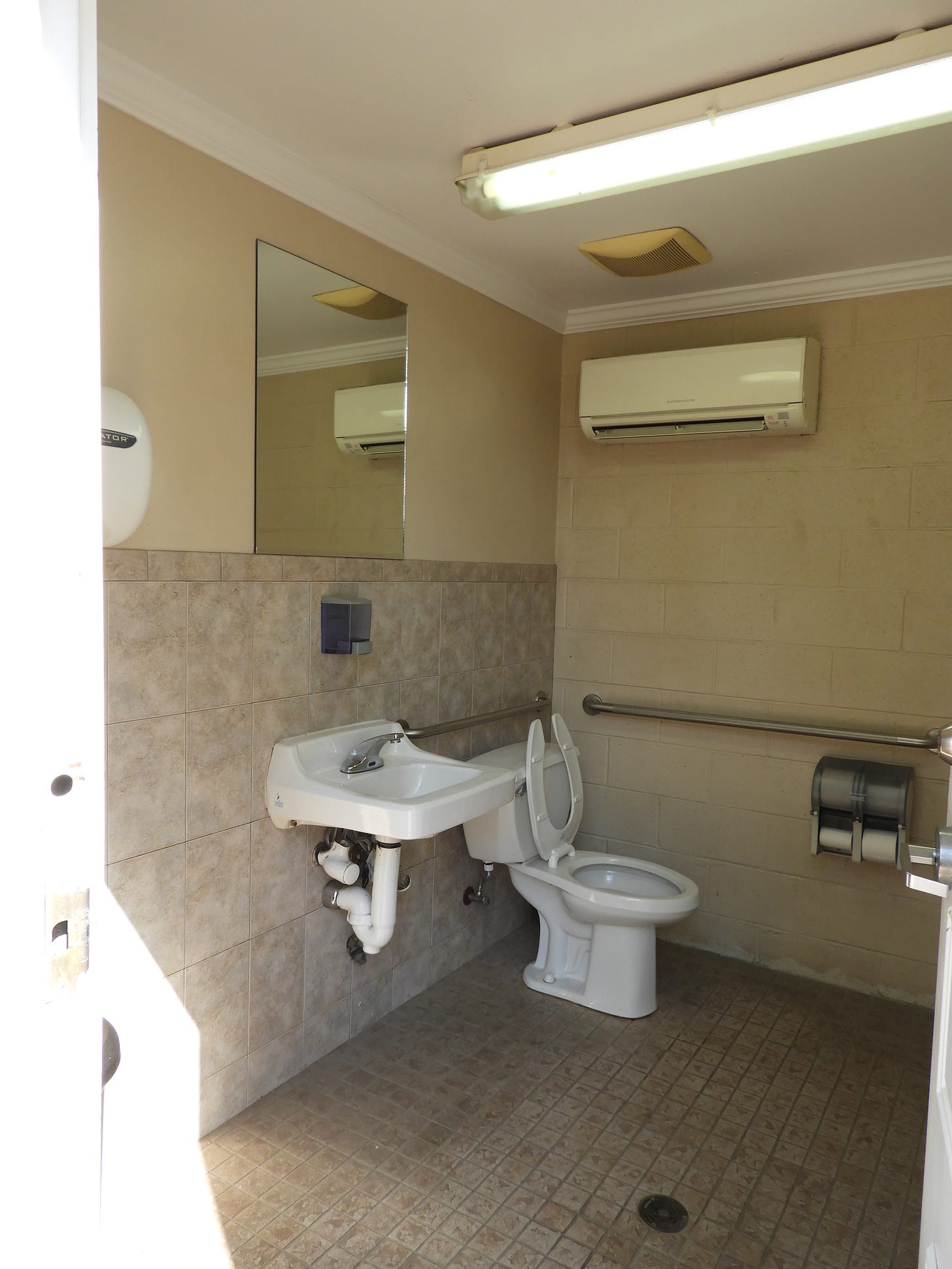Earlier this month, I wrote about the public realm—which in the United States is frequently little more than a parking lot—and how suburbia in many ways replicates a public realm in miniature for every homeowner. It’s nice, if you can afford it, but it means that our public, shared amenities have less buy-in from people who can afford to opt out of them. And those suboptimal shared realms are left for those who can’t opt out of them.
This reminded me of a road trip I took back in July of 2020, photographing the drive along U.S. 50 from Washington, D.C. to Winchester, Virginia. I wrote this piece based on that trip, and it was a lot of fun.
There were a couple of things from that trip I noticed and thought about, but couldn’t really work into the original piece.
One was this sign at a new housing development right off Route 50:
This is in the middle of what was recently the countryside. Actual open space. Now, a little piece of that open space is retained in this new subdivision and turned into a private amenity. Not far from this sign was a code of conduct sign, noting, among other things, no soliciting.
The note I wrote down in my phone, during the road trip, was “Constitutional rights don’t exist in private developments.”
That might be a little dramatic, but it’s generally the case that constitutional rights do not apply on private property. A place like this is designed so that there will never, say, be a political protest here. These places, which cover huge swaths of our metro areas, are not intended for the full exercise or expression of American life. And the funny thing is, some people will still approvingly quote that line about trading liberty for security.
And the other was this.
It’s a very simple, clean, elegantly designed public bathroom, right in the middle of Middleburg’s street grid. It’s especially useful because there aren’t many gas stations or chain stores around here where you can go use the bathroom. And there aren’t any fast food joints or 7-11s. It’s a simple thing, but it was almost shocking to see it, because it’s so uncommon. It’s a real civic amenity.
As this editor at Planetizen writes:


You see the same thing with the D.C. Metro. Most stations lack bathrooms. Sometimes, the bathrooms are kept locked in the ones that do have them. Some of that may be due to vandalism; some to understaffing. Or simply to priorities. Beyond their operating status, they’re almost always situated such that you have to swipe out of the station to access them.
It’s very important to note that none of this is inherent in mass transit. Fixing it—locating the restrooms within the system, keeping them clean and open—would be pretty trivial. It gets back to this question of being able to opt out. Why would you choose to sit on a train for an hour and a half, when it comes every 20 minutes, and when you can’t hop off and hit the men’s room if you need to, when you can drive and your trip takes half as long, and you can sit in your private car and pull off whenever you want?
It feels like an indignity, and people who can choose otherwise don’t like to choose indignities. This creates an awful self-reinforcing feedback loop where we underfund public amenities that would make life easier for all of us, because we think they’re just for those people. And because we think of these things as welfare programs rather than universal civic amenities, we’re indifferent to their underfunding and suboptimal condition.
The fact is that people shouldn’t have to be dedicated to transit, or public space, or any other civic amenity. It should all just work. It should be a good option.
Too often, it isn’t an option at all.
Related Reading:
Expressway is as Expressway Does
Thank you for reading! Please consider upgrading to a paid subscription to help support this newsletter. You’ll get a weekly subscribers-only post, plus full access to the archive: over 400 posts and growing. And you’ll help ensure more material like this!







This creates an awful self-reinforcing feedback loop where we underfund public amenities that would make life easier for all of us, because we think they’re just for those people.
This is the crux of this article. And it is unfortunate that we all can't see how public amenities benefit ALL of us. It is a very similar line of argument made in the book 'The Sum of Us' by Heather McGhee which is more about how racism hurts everyone, because many people don't want minorities to 'get' something.
Years ago when I was studying music in NYC, I used to take the train from Brewster, NY to Grand Central Terminal. GCT had pay toilets and pay showers. NYC made pay toilets illegal. GCT put up a partition so that only 2 stalls and 2 urinals were available, and took away the showers. The NYC subway system does have public bathrooms. They are about as filthy as you would expect regarding a subway system public bathroom, but as the old saying goes..."Any port in a storm."
People will complain about the homeless sleeping in the public bathrooms. Ok, it's a problem. Until we do something right when it comes to dealing with the mental health issues of the homeless, we will continue to have an increase in the homeless population. That will never happen as long as poverty remains a multi-billion-dollar-a-year industry, or is it racket?